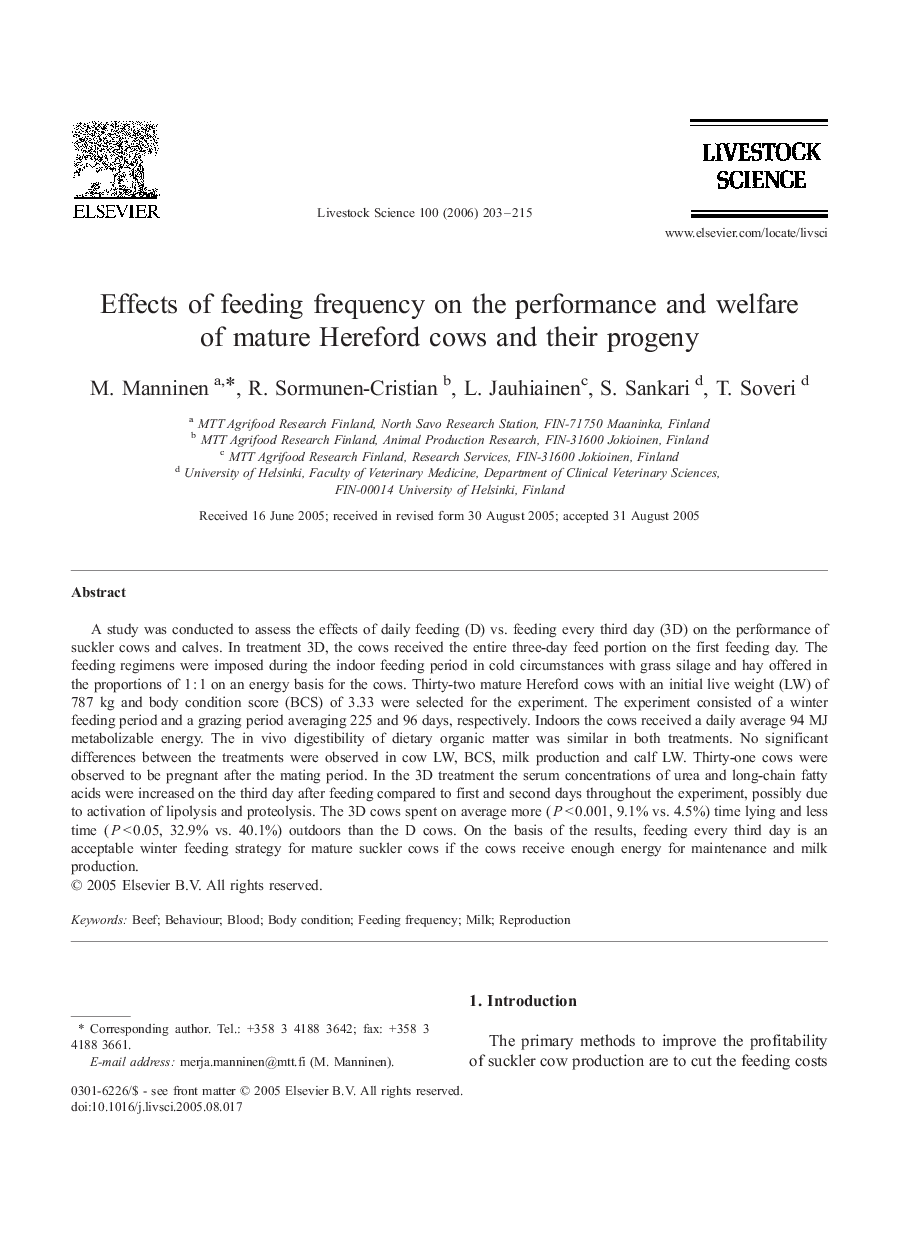| Article ID | Journal | Published Year | Pages | File Type |
|---|---|---|---|---|
| 2449161 | Livestock Science | 2006 | 13 Pages |
A study was conducted to assess the effects of daily feeding (D) vs. feeding every third day (3D) on the performance of suckler cows and calves. In treatment 3D, the cows received the entire three-day feed portion on the first feeding day. The feeding regimens were imposed during the indoor feeding period in cold circumstances with grass silage and hay offered in the proportions of 1 : 1 on an energy basis for the cows. Thirty-two mature Hereford cows with an initial live weight (LW) of 787 kg and body condition score (BCS) of 3.33 were selected for the experiment. The experiment consisted of a winter feeding period and a grazing period averaging 225 and 96 days, respectively. Indoors the cows received a daily average 94 MJ metabolizable energy. The in vivo digestibility of dietary organic matter was similar in both treatments. No significant differences between the treatments were observed in cow LW, BCS, milk production and calf LW. Thirty-one cows were observed to be pregnant after the mating period. In the 3D treatment the serum concentrations of urea and long-chain fatty acids were increased on the third day after feeding compared to first and second days throughout the experiment, possibly due to activation of lipolysis and proteolysis. The 3D cows spent on average more (P < 0.001, 9.1% vs. 4.5%) time lying and less time (P < 0.05, 32.9% vs. 40.1%) outdoors than the D cows. On the basis of the results, feeding every third day is an acceptable winter feeding strategy for mature suckler cows if the cows receive enough energy for maintenance and milk production.
